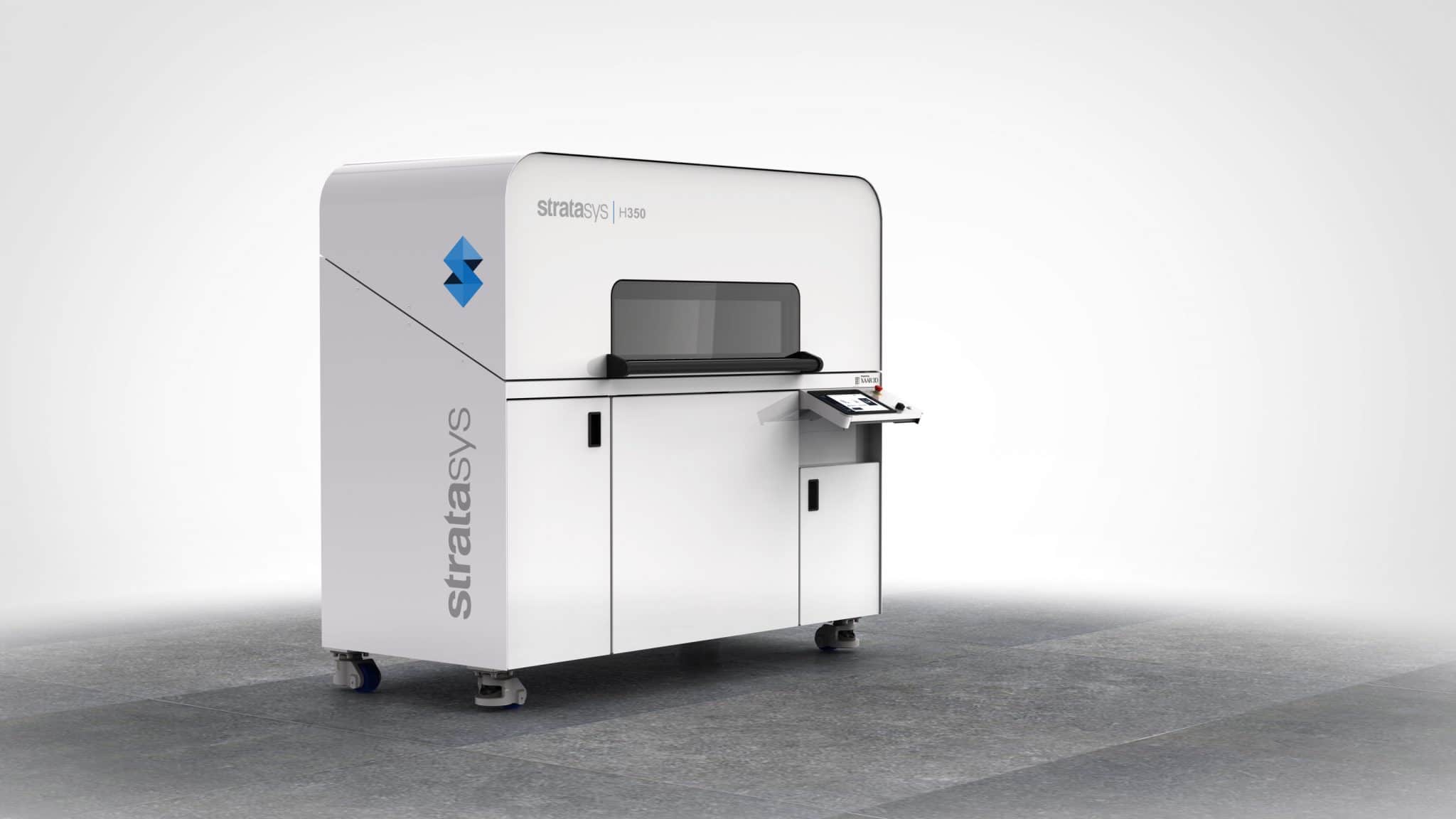Prototal, the largest Nordic 3D printing service provider and one of the largest in Europe has introduced its first H350 3D printer system from Stratasys. The system, which leverages SAF technology (a type of thermal PBF similar to HP’s MJF) to support the production of complex geometric workpieces with tight tolerances and high surface requirements, has been installed at its Danish subsidiary Prototal Damvig.
In total, more than 300,000 3D printed items are produced annually at Prototal Damvig. The requirements to be able to solve complex challenges, continuous investments in new equipment and ambitions to be a technological frontrunner are the background for the growth and the company’s market-leading position, along with and the many different types of parts that are manufactured using some the most advanced equipment.
These include parts for medical equipment, spectacle frames, packaging, bicycle helmets and vital components that streamline food production. These are just a small selection of concrete 3D printing solutions that Prototal Damvig’s industrial customers have solved over the years at working with Susanne and Jesper Damvig’s factory in Tåstrup, Denmark.
Now Prototal Damvig is adding another advanced technology to the existing palette of advanced 3D printing technologies, which the sibling couple and the rest of the staff already offer customers. Close collaboration with Stratasys brought the company to invest in SAF, Selective Absorption Fusion, Technology.
Manufacturing on Demand
SAF uses PA11 powder: blanks are created in nylon 11, layer by layer by applying a heat-absorbing ink. Subsequently, the geometry is fused together via infrared-sensitive HAF (High Absorption Fluid). The HAF process causes plastic powder particles to fuse together layer by layer. The cycle is repeated until the parts – layer after layer – are completed.
SAF is ideal for the production of workpieces with complex geometries, including parts with internal cavities and where tolerances are particularly narrow. Production time is reduced making SAF is an attractive option for many companies.
At the same time, SAF has good technical properties, e.g. because the workpiece produced with SAF is encapsulated in self-supporting powdered material. It eliminates the need for additional supporting structures both on and inside the components. It reduces production time and thus helps to minimize costs.
An additional advantage of the new technology that Prototal Damvig now offers is that the items can subsequently be both sanded and painted. It expands the scope of subsequent surface treatment options considerably.
“With SAF, it is possible to increase the high-precision production of complex items with technically high-quality requirements and a beautiful finish”, said CEO Susanne Damvig, Prototal Damvig. “Both in relation to accelerated prototype development and in relation to series production, SAF is expanding the boundaries of 3D printing as a suitable alternative. ”
The robust high-performance polymer consists of a 100% bio-based material derived from sustainably produced castor oil. Susanne Damvig also stated that Prototal Damvig on the Stratasys equipment can manufacture SAF items with a maximum size of 315 mm X 208 mm X 293 mm.
You might also like:
Nippon Gases introduces AM-focused 3DPro gas product line: On the recently launched website dedicated to the 3DPro products, Nippon Gases highlights that “3D printing is a multilayer process and if, during this process, the surface oxidizes, then it remains strapped in the product. It is precisely for this reason, that these two pollutants must be reduced as much as possible since there is no chance to repair damages, which translates into product loss.” These aspects are of fundamental importance when targeting large batch part production, where ruining an entire build due to impurities can lead to significant financial losses.
* This article is reprinted from 3D Printing Media Network. If you are involved in infringement, please contact us to delete it.
Author: VoxelMatters



Leave A Comment